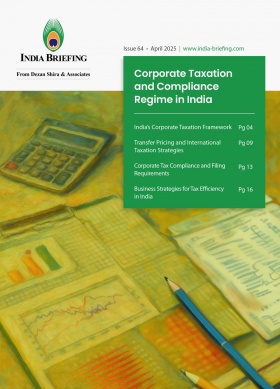India’s Textile Exporters See Opportunity Amid US Tariff Challenges
India’s textile exporters are approaching the recent US tariff impositions not as a setback, but as a strategic opportunity to diversify and strengthen their global market presence.
Industry bodies and exporters assert that, with targeted government support and revised trade policies, Indian manufacturers can offset US market losses by tapping into emerging economies and leveraging new trade agreements.
Indian textile exporters remain optimistic despite the 25 percent tariffs imposed by US President Donald Trump on Indian goods. Industry representatives believe that the impact on exports to the United States can be mitigated through strategic policy support and by leveraging Free Trade Agreements (FTAs) with other countries.
As of 2024, the US market remains structurally dependent on low-cost textile imports, with India ranking among the top six global suppliers.
India’s textile exporters remain resilient amid US tariff pressures
India’s key trade associations have downplayed the impact of recent US tariffs on the domestic textile industry, stating that the sector has not encountered any significant disruptions. However, exporters and trading bodies are urging the central government to take proactive steps—particularly through revising trade policies and reducing production costs—to help Indian exporters remain competitive and explore alternative global markets.
The call for policy reforms comes at a time when the US remains a crucial market for India’s knitted and crocheted apparel exports. Recent data from the United States International Trade Commission (USITC) highlights the volume and spread of Indian apparel exports across major US ports.
|
India’s Exports of *Articles of Apparel and Clothing Accessories, Knitted or Crocheted to the US in 2024 (Top 10 Destinations) |
||
|
US State |
District/city |
*CIF value (US$) |
|
Ohio |
Cleveland |
139,750,805 |
|
Georgia |
Savannah |
565,849,625 |
|
North Carolina |
Wilmington |
16,954,025 |
|
Washington state |
Seattle |
52,235,909 |
|
Pennsylvania |
Philadelphia |
10,157,933 |
|
Virginia |
Norfolk |
127,873,581 |
|
New York state |
New York |
824,679,972 |
|
Louisiana |
New Orleans |
28,792,734 |
|
California |
Los Angeles |
258,179,839 |
|
South Carolina |
Charleston |
187,540,783 |
Source: United States International Trade Commission, DataWeb
*Articles of Apparel and Clothing Accessories, Knitted or Crocheted, come under HS code 61. The import numbers of the commodity are for consumption purposes and do not include general import data.
**CIF value = Cost of goods + insurance + freight charges.
Underlining the sector’s resilience, the National Chairman of the Confederation of All India Traders (CAIT) has said that even if one country restricts access, Indian traders will adapt and identify new markets.
ALSO READ: Trade War Economics: India’s Moment in the US’s Tariff Strategy
Exploring new horizons: India’s textile sector eyes global expansion
Textile traders from Surat, Gujarat, one of India’s largest textile hubs, have expressed strong confidence in the industry’s ability to withstand global trade headwinds. They believe that the sector’s adaptability, manufacturing efficiency, and entrepreneurial resilience will help Indian exporters overcome the impact of tariffs and other trade barriers by expanding into new and emerging markets.
Industry experts widely agree that Indian textiles are now positioned as credible alternatives to Chinese products, supported by their increasing market share in countries such as Bangladesh, Vietnam, and Cambodia. With targeted support from the central government—particularly for micro, small, and medium enterprises (MSMEs)—Indian exporters are optimistic about tapping new opportunities in Europe, South Africa, Japan, and Central Asia.
|
India’s Exports of Textile Products in FY 2024-25 |
|
|
Country/region |
Value in US$ million |
|
US |
10,959 |
|
Bangladesh |
3,289 |
|
UK |
2,162 |
|
UAE |
2,142 |
|
Germany |
1,423 |
|
Netherlands |
1,226 |
|
Spain |
1,002 |
|
France |
949 |
|
Sri Lanka |
817 |
|
Italy |
793 |
Source: Department of Commerce, Ministry of Commerce and Industry, GoI
Recognizing the shifting dynamics of global trade, India’s textile traders are urging the government to introduce alternative policy frameworks, including subsidies, tax reliefs, and other production-linked incentives, to reduce manufacturing costs and maintain global competitiveness.
As per media reports dated August 5, 2025, traders from Surat emphasized that the current tariff scenario should be seen as a strategic opportunity rather than a challenge. They highlighted notable growth potential in European, African, and Asian markets, along with opportunities to strengthen India’s textile sector footprint in countries such as Vietnam, Bangladesh, and China.
With a renewed focus on market diversification and policy support, India’s textile industry is determined to sustain its export momentum and establish a future-ready, globally competitive trade ecosystem.
US’s textiles import dependence
Despite the imposition of tariffs under Trump’s administration, the US remains heavily reliant on textile and apparel imports. In 2024, the US imported over US$38 billion worth of knitted or crocheted apparel from its top supplier countries. China continued to dominate, accounting for over US$10.6 billion, followed closely by Vietnam (US$8.7 billion), Cambodia (US$2.8 billion), and Bangladesh (US$2.6 billion). India ranked sixth, with exports valued at US$2.44 billion, reflecting its strong position despite tariff-related challenges.
|
US Imports of Articles of Apparel and Clothing Accessories, Knitted or Crocheted in 2024 |
|
|
Country |
*CIF value in US$ |
|
Bangladesh |
2,599,573,729 |
|
Cambodia |
2,864,871,962 |
|
China |
10,634,503,881 |
|
El Salvador |
1,289,905,790 |
|
Guatemala |
1,480,650,953 |
|
Honduras |
2,061,863,921 |
|
India |
2,444,660,405 |
|
Indonesia |
2,327,036,843 |
|
Nicaragua |
1,697,602,794 |
|
Pakistan |
1,265,980,724 |
|
Sri Lanka |
1,095,702,165 |
|
Vietnam |
8,706,713,530 |
Source: United States International Trade Commission, DataWeb
**CIF value = Cost of goods + insurance + freight charges.
This data underlines the structural dependence of the US market on low-cost textile imports from Asia and Central America. While tariffs aimed to reduce reliance on certain countries, especially China, the overall demand for cost-competitive imports has continued to fuel trade with a diversified set of partners, including India, Vietnam, Indonesia, and Bangladesh.
About Us
India Briefing is one of five regional publications under the Asia Briefing brand. It is supported by Dezan Shira & Associates, a pan-Asia, multi-disciplinary professional services firm that assists foreign investors throughout Asia, including through offices in Delhi, Mumbai, and Bengaluru in India. Dezan Shira & Associates also maintains offices or has alliance partners assisting foreign investors in China, Hong Kong SAR, Vietnam, Indonesia, Singapore, Malaysia, Mongolia, Dubai (UAE), Japan, South Korea, Nepal, The Philippines, Sri Lanka, Thailand, Italy, Germany, Bangladesh, Australia, United States, and United Kingdom and Ireland.
For a complimentary subscription to India Briefing’s content products, please click here. For support with establishing a business in India or for assistance in analyzing and entering markets, please contact the firm at india@dezshira.com or visit our website at www.dezshira.com.
- Previous Article What Foreign Investors Must Know About India’s FEMA Regulations
- Next Article India’s Semiconductor Sector Outlook 2025: Growth, Investments, and Policy Incentives








